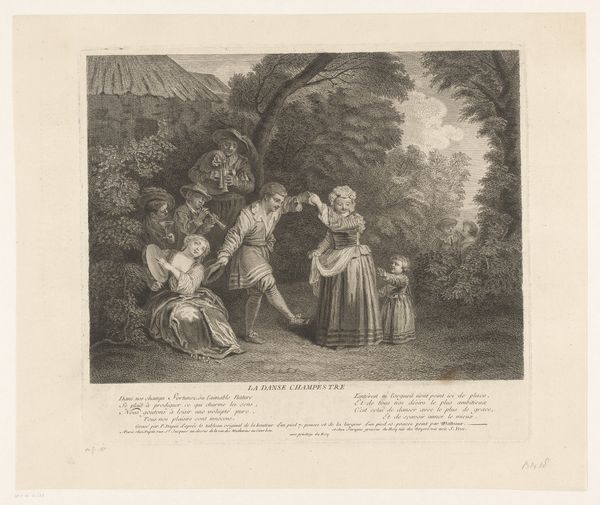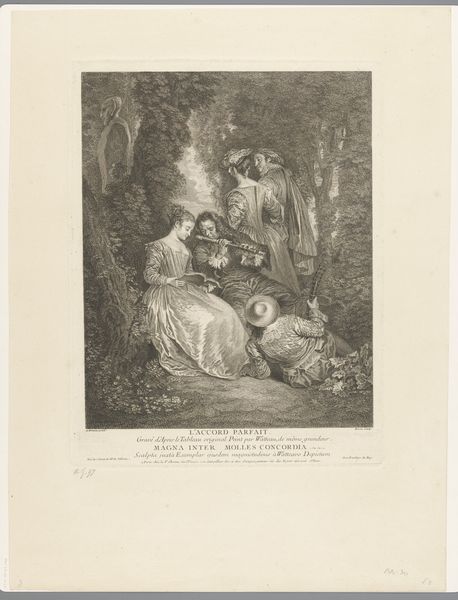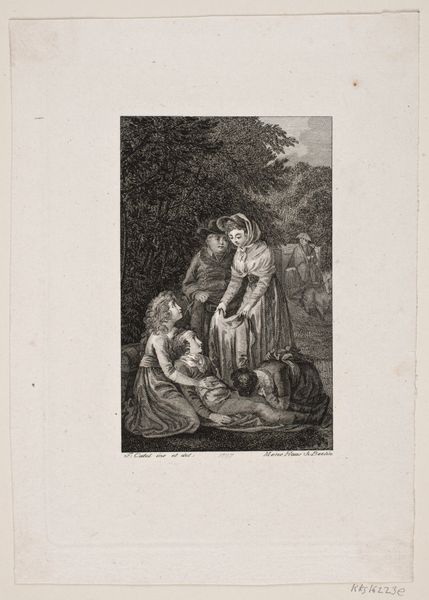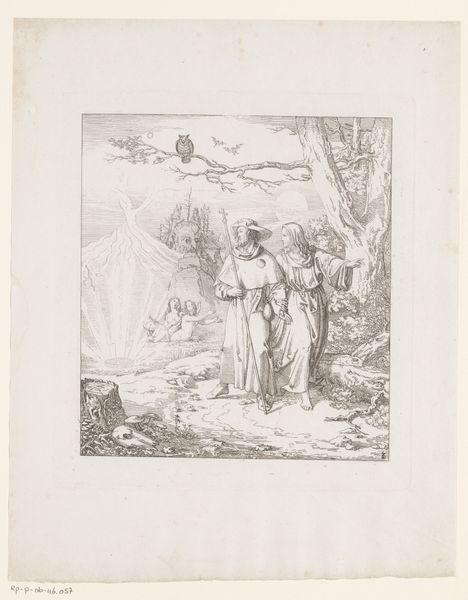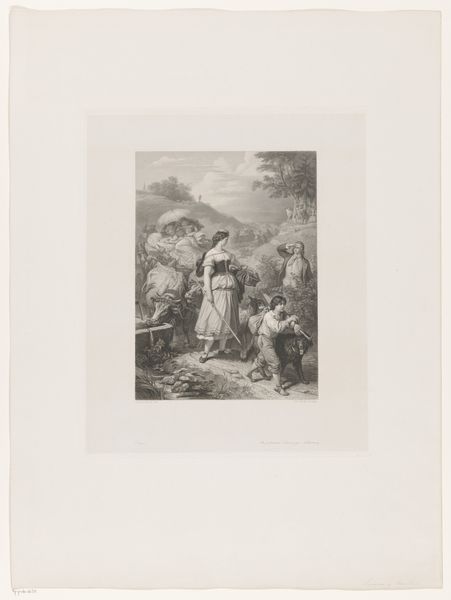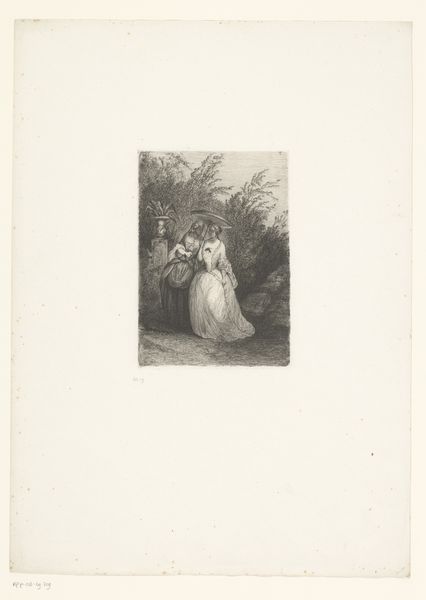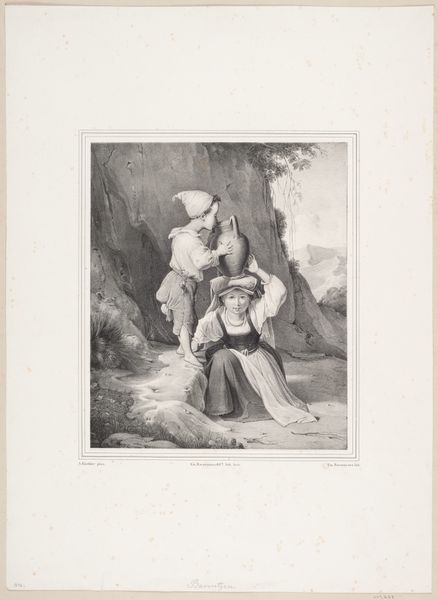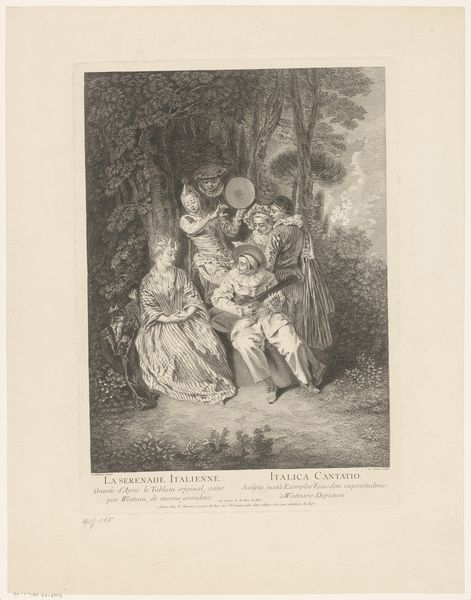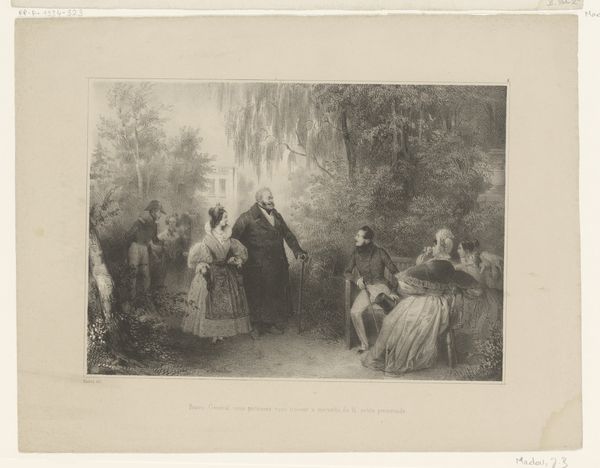
print, engraving
#
narrative-art
# print
#
landscape
#
figuration
#
group-portraits
#
romanticism
#
genre-painting
#
engraving
#
realism
Dimensions: height 553 mm, width 400 mm
Copyright: Rijks Museum: Open Domain
This mezzotint by George Keating, made around the late 18th century, shows a nurse with three children amidst a forest. The iconography here, though seemingly simple, is deeply rooted in cultural memory. Consider the act of offering flowers, a tender gesture seen throughout art history, from classical depictions of Flora to Pre-Raphaelite paintings. Here, a child presents a bouquet, echoing themes of innocence and the fleeting beauty of youth. This reflects a pastoral ideal, a longing for simpler times, which has resonated through art across centuries. The depiction of children and nature also carries psychological weight. Childhood often symbolizes purity and potential, while nature represents the untamed, subconscious aspects of life. The forest backdrop itself can be seen as a symbol of the unknown, a place of both wonder and danger. These motifs aren't static; their meanings evolve. What was once a symbol of religious devotion transforms into a celebration of natural beauty, reflecting a cyclical progression and the enduring power of images to evoke emotions and memories across time.
Comments
No comments
Be the first to comment and join the conversation on the ultimate creative platform.

